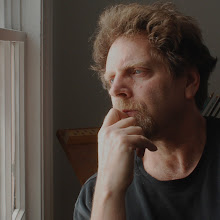

"Nice," below, by Carlos Estrada Vega, put me in mind of this quilt.
As names of movements tend to be, "cubism" was not at all an accurate description of the ‘shattered glass” reductivism of Picasso and Braque. But these, above, are unequivocally cubist.
The first is a quilt named “Tumbling Cubes: Stairway to Heaven.” I was raised among Mennonites and a very early recollection I have is sitting under a quilt, stretched on its frame in a large room and in the process of being stitched, thinking I was in some entrancing, low-roofed pavilion where cups of kumquat lemonade would presently arrive.
I concur with Robert Hughes that Amish and Mennonite quilts should be credited more than they are for inventing the particularly American geometric abstraction that painters and sculptors in time would imitate. What about their piety transmuted itself into the complex geometries of their quilts? There was, and still is, a Muslim-like aversion to pictorial iconography, which in turn, as with the arts of Islam, fostered at times a delirious predilection for pattern. There is, as well, something essentially geometric about the economy of farming: square fields, rectangular gardens, longitudinal furrows, long ladders, cubes of hay and the circle of the year itself.
The second is a staggering work of skill and imagination. Cubes of crystal glass, conceived by Eric Hilton and created by engravers at Corning GlassWorks, fit together so perfectly they almost fuse. The assembled block is an archive of almost hallucinatory emblems, some contained and squared within their own cube, others spreading to adjacent cubes. Externally the block is a pure marvel of jewelled smoothness; internally it is a Max Ernst cabinet de curiosités, a glorious and bewildering palimpsest of dream images.

No comments:
Post a Comment